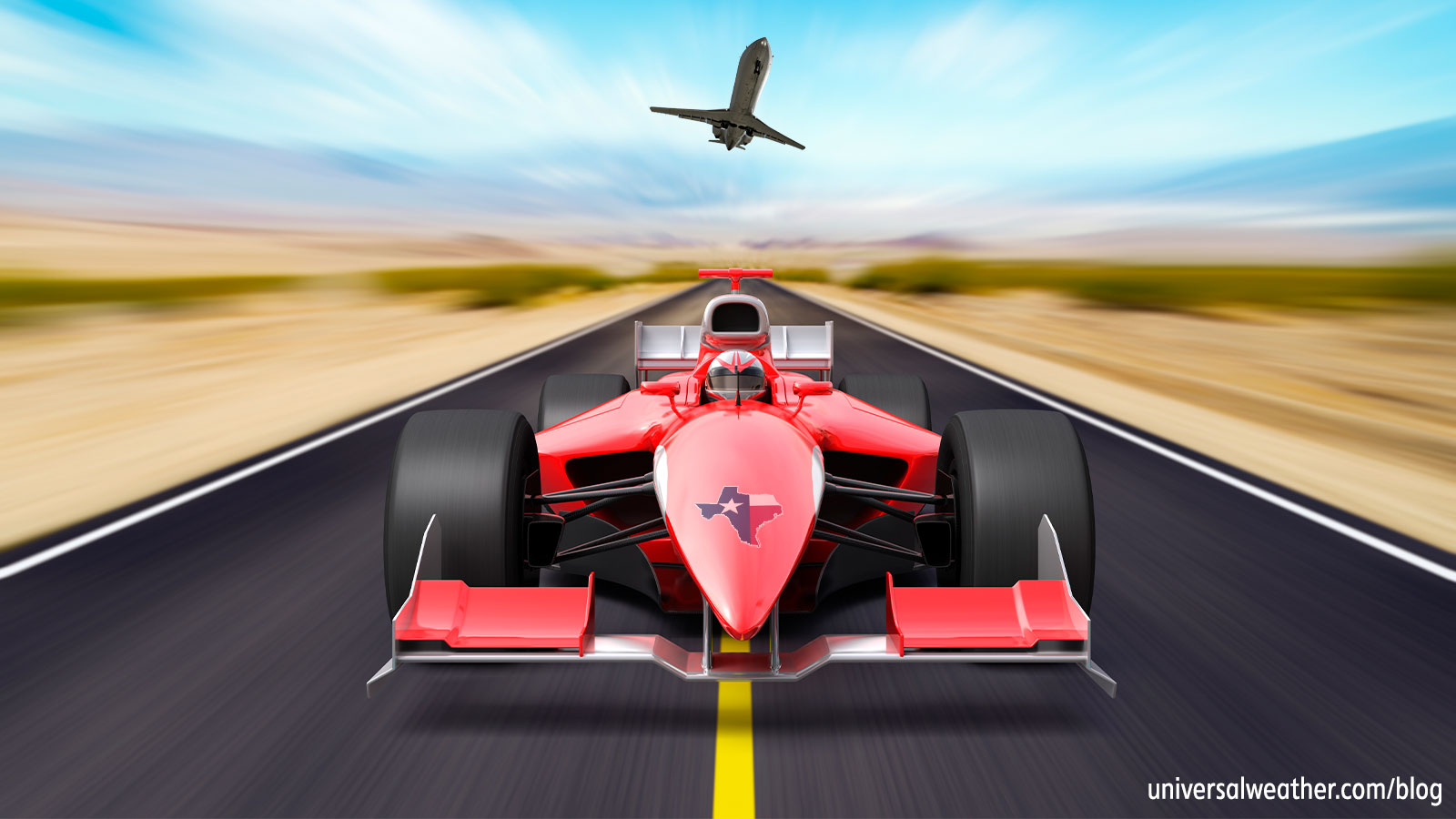Flying to the Austin Formula 1 Grand Prix


This year’s U.S. Formula 1 Grand Prix will be held November 16th-18th on an all-new, purpose-built track at the Circuit of the Americas southeast of the Texas capital of Austin. The new 3.427-mile track will feature a selection of corner sequences inspired by the best Grand Prix venues. The Austin Grand Prix will be busy, drawing large crowds and higher-than-normal business aviation traffic to the area. Best options, in terms of aircraft parking and hotel accommodations, will be available to those who book as early as possible.
1. There are four airports to consider for the Austin Grand Prix
The closest airport to the Grand Prix is Austin-Bergstrom Int.’l (KAUS) – an approximately 15-minute drive to the circuit. Other good options – with customs availability, although farther from the race track – include San Antonio Intl (KSAT), a one-hour, 10-minute drive from Austin and Houston William P. Hobby (KHOU) at approximately two hours and 40 minutes from the circuit. All three are Airports of Entry (AOEs) and operate 24 hours a day. Domestic-only airport options include Austin Executive (KEDC) and Horseshoe Bay Resort (KDZB).
2. PPR is needed for Austin
Although KAUS is a 24-hour airport, customs has specific hours for General Aviation (GA) operations. GA operations may clear Monday-Friday, 0800-2000 local, and Saturday-Sunday, 0800-1600 local, unless approved otherwise. During the Austin Grand Prix period, Prior Permissions Required (PPRs) will be required for all operations to KAUS. PPRs may be obtained by contacting a Fixed-Base Operator (FBO) or 3rd-party provider. When requesting a PPR, include your tail number, customs requirements, full schedule and number of passengers on board. Once the request has been processed, airport operations will provide you with a PPR number. Be advised that Notices to Airmen (NOTAMs) for this requirement will not likely be issued until 72 hours before the event.
3. San Antonio is a landing rights airport
KSAT is an AOE with 24-hour-a-day operations. Normal customs operating hours, however, are Monday through Saturday, 0830-1700 local. As KSAT is also a “landing rights” airport, plan on additional lead time when requesting customs arrangements.
4. William P. Hobby (KHOU) is another good option
KHOU is a 24-hour AOE but, as with other airports, has customs operating hour restrictions. Normal customs operating hours are 0800-1730 local, unless overtime has been approved. As with KSAT, KHOU is a “landing rights” airport, so plan on additional time when arranging customs.
5. Domestic-only airports are great options for aircraft parking
Although KEDC is not an AOE, it offers 24-hour operations for domestic movements. KEDC is located north of the circuit and involves a drive of approximately 25 minutes. KDZB is an additional option for those planning domestic flights to the Austin area. While this airport operates 24 hours, FBO hours are more limited, and additional fees may apply for late arrivals. PPR, with 24 hours notice, is required for all operations to KDZB. Keep in mind that operations to KDZB using special RNAV GPS approaches must obtain written approval from the local Flight Standards District Office (FSDO).Without written approval from the FSDO, operators may not legally use these approaches.
6. Landing permits are not necessary; other requirements must be met
While international arrivals to the U.S. don’t usually require landing permits, there are differing regulatory requirements based on the specific details of each trip. Factors that can affect requirements include the purpose and designation of a flight (private non-revenue or non-scheduled commercial), country of registry, aircraft type and schedule. Requirements for travel to, from or within the U.S. can include:
- Customs notification inbound (all operators)
- Advanced passenger information system (APIS) inbound/outbound (all operators)
- U.S. customs decal (all operators)
- U.S. customs bond (non-scheduled commercial operators)
- Customs notification outbound (non-scheduled commercial operators)
- Master crew list (non-scheduled commercial operators)
- Permit to proceed (non-scheduled commercial operators)
- Transportation Security Administration (TSA) waiver – airspace access program
- Federal Aviation Administration (FAA) special routing clearance (specific aircraft registrations only)
- U.S. visa requirements for foreign crew/passengers (all operators)
Consider Visa Waiver Program (VWP) and Border Overflight Exemption (BOE) program registration to improve international operating flexibility and ease both operational and individual restrictions. It’s best to refer to additional guidance regarding these requirements and options to determine whether they’re applicable to your operation. Coordinating with a 3rd-party provider to ensure compliance is always recommended.
7. Confirm hotel and local transport arrangements as early as possible
Due to high demand over the U.S. Grand Prix period, it’s recommended that 4- or 5-star hotels be booked as early as possible. For this particular Grand Prix, it’s important to note that only certain seating holders may obtain on-site vehicle parking. This is coordinated via specific pre-paid vehicle parking permits. Roads leading to the circuit will be restricted, and no on-the-spot cash parking will be available at the venue. In most cases, the best local transport options will include official shuttle buses, pre-paid transportation and taxis with proper licensing for the city of Austin and appropriate parking placards to allow access to the venue. For more information regarding transportation arrangements, please visit the circuit’s official site.
8. Check online for additional information
Information regarding circuit diagram, date and timetable, ticket purchases and more can be found on the Formula 1 website.
Conclusion
While plenty of aircraft parking and accommodation options are available for operators planning to attend the U.S. Formula 1 Grand Prix at Austin, preferred parking and hotels may not always be readily available. Best practice is to begin working with your 3rd-party provider and/or FBO on these arrangements as soon as a firm schedule is known.
Questions?
If you have any questions about this article, contact us at christinevamvakas@univ-wea.com or greglinton@univ-wea.com.




